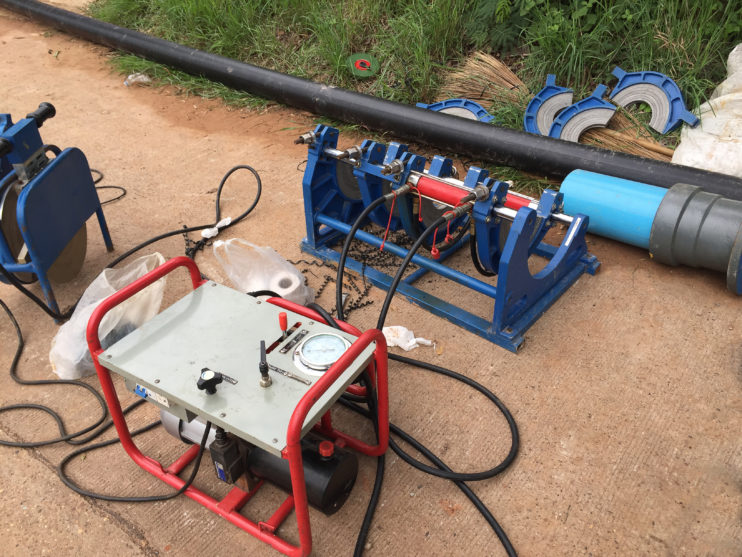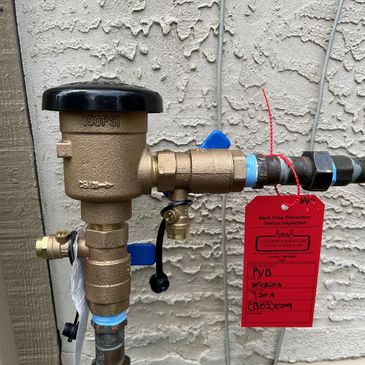Do Backflow Testing Compulsory for My Water Supply?
Do Backflow Testing Compulsory for My Water Supply?
Blog Article
How do you really feel on the subject of What is Backflow Testing??

Yes, you require to backflow test your residence's water supply to make certain that the water is free of toxins as well as unsafe levels of chemicals. Because of the devices called for and also room for error, you should not try to perform heartburn testing on your own. We advise that you call an expert plumber every number of years to test your water.
Backflow Can Influence Both You and Your City
Many cities establish heartburn standards since dangerous backflow can influence the general public supply of water along with a solitary building. Modern cities have backflow tools in location that protect the water supply that comes from the majority of residences and also industrial properties. The genuine risk comes from watering systems, which can harm the water with hazardous fertilizers, manure, and various other chemicals.
What Causes Backflow?
A typical reason of heartburn is a loss of water stress that triggers the water to siphon back right into the water supply. After some time, there is a loss in water stress and also the hose pipe begins to draw the water back right into the water supply. As you can think of, there are now chemicals from the paint that are going into the water supply, possibly posturing a hazard.
Backflow Testing is Required by Law in Certain Cities
Depending upon where you live, you might in fact be called for by regulation to backflow test your law. As an example, Iowa City maintains a record of all properties offered by the city's water. The city calls for that specific "high-hazard" centers go through heartburn testing. Sometimes, homes such as residences as well as apartment are impacted.
You Can Protect Against Heartburn
If you have a professional plumber set up a backflow device, dangerous backflow is easily avoidable. If there is an energetic danger, the plumber will also examine for backflow and identify. The main objective of a backflow tool is to avoid water from flowing in reverse right into your water system. Plumbing professionals mount the device on the pipes in your residence to guarantee that the water just moves in the correct direction.
What is Backflow?
Simply put, heartburn is when water moves upwards-- the contrary direction in the plumbing system. This is also called "backpressure." When the water moves in this direction, it can combine with unsafe toxins as well as posture a risk.
Call a Plumber to Test for Backflow Before It is Far too late
A plumbing company can promptly check your house's water to identify if there are any type of harmful chemical degrees. And if you do uncover that your water has high degrees of contaminants, a plumber can conveniently set up a backflow avoidance device.
Yes, you require to backflow test your home's water supply to make sure that the water is cost-free of toxic substances as well as hazardous degrees of chemicals. Several cities establish backflow standards since dangerous heartburn can influence the public water supply in enhancement to a solitary building. A regular cause of backflow is a loss of water pressure that causes the water to siphon back into the water supply. After some time, there is a loss in water pressure and also the hose begins to suck the water back into the water supply. The main purpose of a heartburn tool is to avoid water from streaming backward into your water supply.
WHY DOES BACKFLOW TESTING NEED TO BE DONE EVERY YEAR
What Is Backflow?
Toxic gas backing up into a building is one example of potential backflow issues, but backflow can occur in many other ways.
Backflow is generally referred to as the reversal of a liquid or gas in a plumbing system.
Most issues for the public occur with backflow resulting in contaminated drinking water. If you look up backflow issues online you’ll probably find references to “potable” water. That means drinking water.
There have been backflow issues in the past with drinking water. Chemicals, sewage and other contaminants have found their way into drinking water causing health issues for those that count on the fresh water.
What Causes Backflow?
In a residence or commercial building water generally flows one way. This normal flow is usually driven by consistent pressure in the water and waste system.
Anything that changes the normal pressure in the system can lead to backflow.
Fire hydrant use or malfunction can reverse the normal pressure in the system on a city line, but backflow can occur in a number of different ways.
Sometimes backpressure might be caused by someone using a garden hose and submerging the end of the hose in a pool of liquid. If pressure is lost the flow could reverse and contaminants could be released into the drinking water.
Anytime there is a connection between contaminants and the drinking water there is potential for a backflow issue. Sometimes these connections are not immediately obvious like the garden hose connecting to a building’s drinking water supply.
Backflow Regulations
The Environmental Protection Agency (EPA) provides guidelines and regulations for state and local governments regarding backflow. State and local governments also have their own guidelines and regulations for backflow prevention.
Arizona has its own backflow regulations.
Due to issues with backflow in the past, regulations require backflow preventer devices to be used in nearly all residential and commercial buildings.
A backflow preventer is a device that prevents backflow as cross-connection points where potential backflow issues may occur.
While backflow is not a common occurrence, preventers are in place to make sure there is no contamination should something malfunction or go wrong with a building’s water supply.

We hope you enjoyed our piece on Backflow Prevention. Thanks a lot for spending some time to read through our short article. Be sure to take a moment to distribute this blog posting if you enjoyed reading it. Thanks for taking the time to read it.
Call Today
Report this page